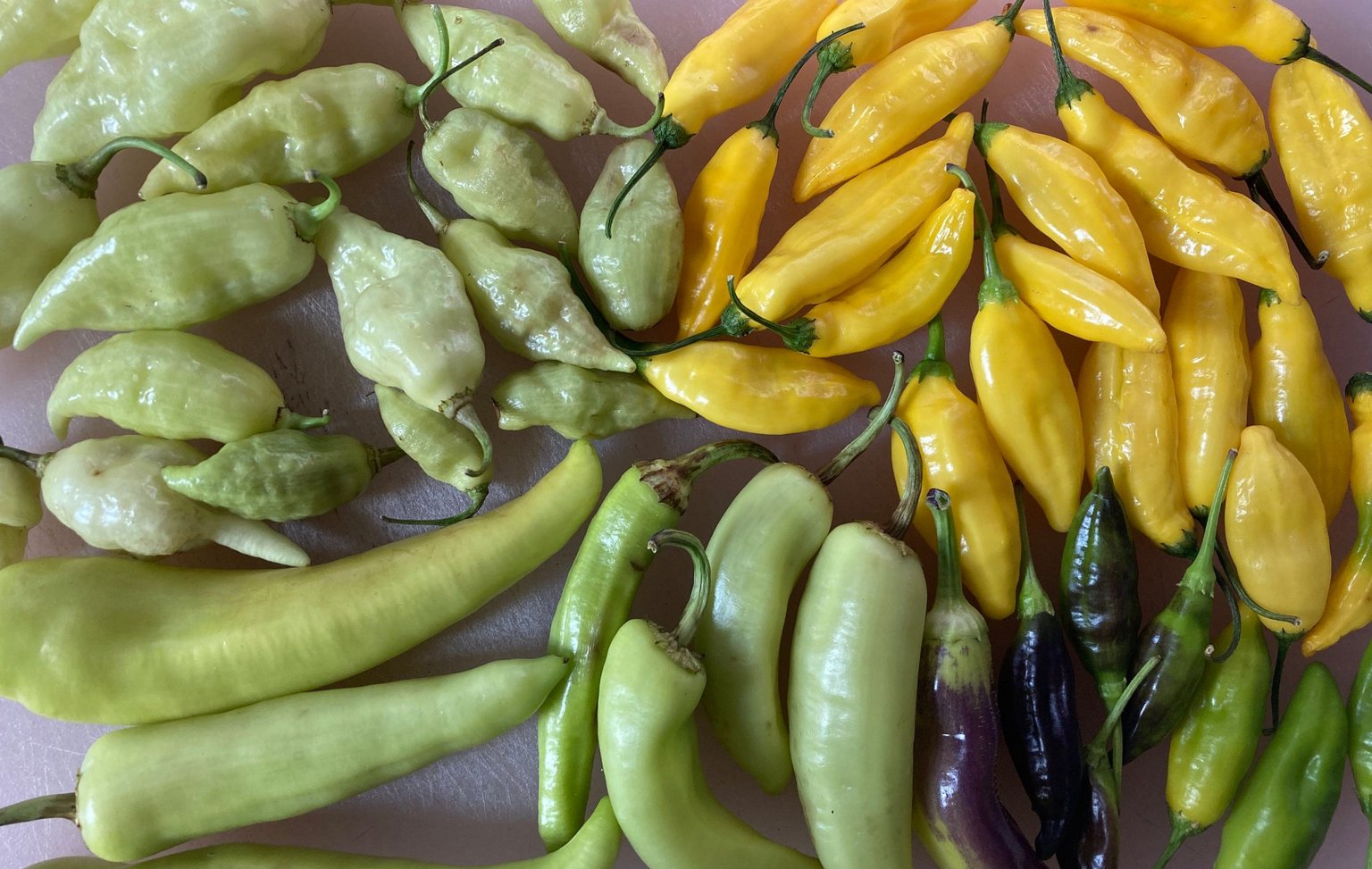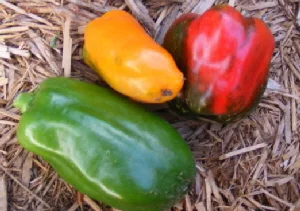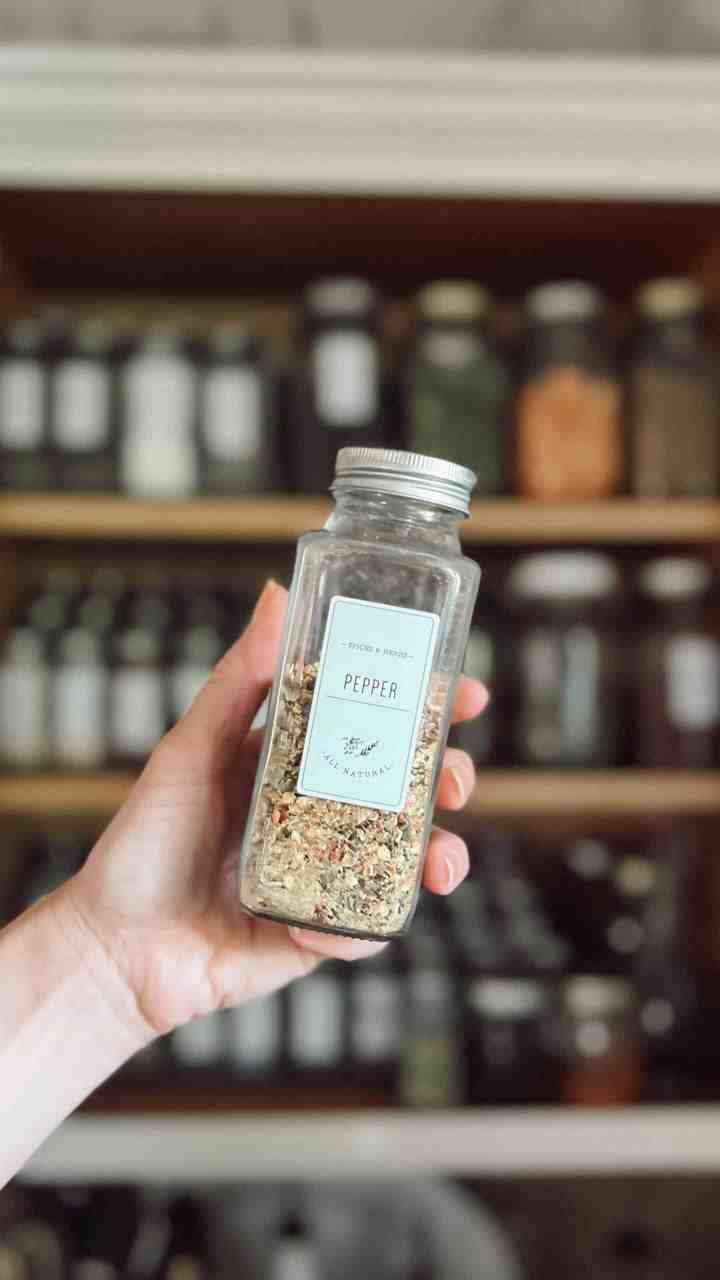Why Harvesting Peppers the Right Way Makes a Difference

Peppers—whether they’re sweet or fiery, crunchy or smoky—are beloved staples in many home gardens thanks to their vibrant colors, diverse varieties, and rich flavors. However, many gardeners overlook how the way they pick peppers can significantly affect the plant’s health, productivity, and lifespan. Rough handling can snap stems or weaken the plant’s framework, leading to fewer peppers or even cutting the plant’s life short. Conversely, careful harvesting encourages the plant to keep producing fruit throughout the season, sometimes doubling your harvest.
In this guide, we’ll cover the best practices for picking peppers without harming the plant, how to recognize when peppers are perfectly ripe, the tools you’ll need, tips for post-harvest care, and the science behind why proper harvesting boosts growth.
The Importance of Proper Pepper Harvesting

Peppers are fruit-bearing plants that produce in cycles. The plant’s energy cycles through flowering, fruit development, and seed maturation. When fruit ripens, the plant naturally shifts focus toward reproduction, but smart harvesting can redirect energy back into fruit production. Poor harvesting techniques can:
- Break stems or branches
- Create openings for pests and diseases
- Stress the plant
- Lower future yields
- Result in misshapen or stunted peppers
On the other hand, harvesting correctly:
- Stimulates more flowers and fruit
- Preserves the plant’s structure
- Minimizes disease risk
- Prolongs the harvest period
- Yields better-quality peppers
Understanding Pepper Growth and When to Harvest
Knowing the stages of pepper development helps you pick at the ideal time:
- Flowering Stage: Small white, yellow, or purple flowers bloom and get pollinated.
- Fruit Set: Tiny peppers begin to form and grow.
- Mature Green Stage: Peppers reach their full size but remain green.
- Ripening Stage: Peppers change color (red, yellow, orange, etc.), sweeten, and develop heat if they’re spicy varieties.
- Overripe Stage: Fruits soften, wrinkle, or start to rot and detach from the stem.
You can harvest peppers at various stages depending on your taste preferences and cooking needs, but mastering the right picking technique is essential no matter the ripeness.
When Are Peppers Ready to Pick?
Here’s a quick guide to tell when common pepper types are ready:
| Pepper Type | Ready When… |
|---|---|
| Bell Peppers | Firm, full-sized, green or fully colored red, yellow, or orange |
| Jalapeños | 3–4 inches long, dark green or red if fully ripe |
| Banana Peppers | Pale yellow to orange, 4–6 inches long |
| Cayenne Peppers | Bright red, firm, 5–6 inches long |
| Habaneros | Orange or red, slightly wrinkled, firm to touch |
| Shishito | Green, 3–4 inches long, before wrinkles appear |
Tip: Avoid leaving peppers on the plant too long after ripening, as overripe fruit can stress the plant and slow down further production.
Essential Tools for Harvesting Peppers
Using the proper tools protects both your peppers and the plant. Avoid yanking peppers off by hand, which can damage stems or branches.
Essential Tools for Harvesting Peppers
- Precision pruning shears
- Garden scissors
- Harvesting snips
- Bypass pruners (ideal for cutting thicker stems)
Always keep your tools sharp and disinfected to avoid spreading diseases among your plants.
How to Harvest Peppers Without Harming the Plant
Follow these detailed steps to pick peppers cleanly and maintain plant health:
-
Examine the Pepper
Ensure the pepper has reached the desired size and color. Gently press it—it should feel firm, not soft or shriveled. Avoid picking peppers that show cracks, pest damage, or rot.
-
Support the Stem, Not the Fruit
Hold the branch or stem firmly with one hand to minimize stress on the plant, especially when handling large or heavy peppers.
-
Cut, Don’t Pull
Use scissors or pruners to snip the stem about a quarter inch above the fruit’s calyx. Make a clean, angled cut to prevent crushing the stem or the pepper.
-
Harvest Early in the Day
Cooler morning temperatures reduce plant stress. The fruit is firmer and moisture levels are optimal, making handling easier.
-
Inspect the Plant Post-Harvest
Look for any damaged branches, pests, or diseased leaves. Clear away fallen fruit and debris from the base to maintain plant health.
Why Regular Harvesting Boosts Pepper Production
Most pepper plants are indeterminate, meaning they keep producing fruit as long as they remain healthy and conditions are favorable. Picking ripe peppers:
- Encourages the plant to focus on producing more fruit instead of seed development.
- Lessens the weight and strain on branches.
- Enhances air circulation, reducing the risk of fungal infections.
By harvesting every 2 to 3 days, you can greatly prolong your pepper plant’s productivity and lifespan.
Post-Harvest Care to Keep Your Plant Thriving
- Consistent Watering: Avoid letting the soil dry out completely. Deep watering helps develop strong roots.
- Moderate Fertilizing: After a heavy harvest, apply a balanced fertilizer or compost tea. Excess nitrogen promotes leafy growth at the expense of fruit.
- Support Structures: Use stakes or tomato cages to support branches bearing heavy fruits like bell peppers.
- Remove Damaged Parts: Eliminate sunburned, pest-damaged, or misshapen peppers to redirect energy toward healthy growth.
Handling and Storing Freshly Picked Peppers
Proper care after harvesting keeps your peppers fresh and safe:
- Short-Term Storage: Refrigerate in a perforated plastic bag or produce drawer. Peppers stay fresh for 1–2 weeks, though thin-skinned varieties may last less.
- Long-Term Preservation:
- Freeze chopped peppers in airtight containers.
- Dry hot peppers by hanging or using a dehydrator.
- Pickle peppers in vinegar and brine for extended shelf life.
- Ferment peppers to create hot sauces or probiotic pickles.
Managing End-of-Season Harvests
As frost approaches:
- Gather all ripe and nearly ripe peppers.
- Allow green peppers to ripen indoors on a sunny windowsill.
- Remove unripe fruit to reduce stress on the plant.
Bringing Your Pepper Plants Indoors for Winter
For those cultivating hot pepper varieties, consider moving your plants inside during colder months to protect them.
Avoid These Common Harvesting Errors
- Grabbing Peppers by Hand: This can harm the branches and diminish future yields.
- Delaying the Harvest: Waiting too long can slow down the development of new fruits.
- Picking Too Soon: Early harvesting results in peppers that haven’t developed their full flavor or heat.
- Using Blunt Tools: Dull instruments may crush or tear the peppers instead of cleanly cutting them.
- Neglecting Plant Support: Without proper support, branches heavy with fruit risk breaking.
Bonus: How to Save Seeds for Next Season
If you want to preserve seeds:
- Allow some peppers to fully ripen on the plant until they soften.
- Harvest these peppers, extract the seeds, rinse them, and let them dry completely in the air.
- Store the dried seeds in a labeled envelope kept in a cool, dry environment.
- Only save seeds from open-pollinated (non-hybrid) pepper varieties to ensure true-to-type plants.
Final Thoughts: Handle with Care for a Bountiful Crop
Growing peppers is incredibly rewarding. By mastering the right harvesting techniques, you can enjoy a long, fruitful season without harming your plants. Timing, proper tools, and plant care are essential. Using sharp cutters, supporting your plants, and harvesting regularly encourages more blossoms, more peppers, and richer flavors. Whether you’re growing sweet bell peppers or fiery jalapeños, gentle harvesting will yield generous rewards.
-
Peppers’ Popularity: Valued for flavor, color, and variety in home gardens.
-
Impact of Harvesting: Proper harvesting affects plant health, productivity, and longevity.
-
Risks of Careless Harvesting: Can break stems, weaken plants, reduce yields, or kill plants early.
-
Benefits of Proper Harvesting: Encourages continued fruit production, sometimes doubling yield.
-
Why Proper Harvesting Matters:
- Peppers produce fruit in cycles; harvesting redirects energy to fruit production.
- Improper harvesting risks stem damage, disease, stress, and lower yields.
- Proper harvesting promotes flowering, maintains structure, reduces disease, extends season, and improves fruit quality.
-
Pepper Growth Stages:
- Flowering: flowers appear and get pollinated.
- Fruit Set: small peppers form.
- Mature Green: full size but green.
- Ripening: color change, sweetening, heat development.
- Overripe: softening, wrinkling, rotting.
-
Harvest Readiness by Type:
- Bell: firm, full-sized, green or colored.
- Jalapeño: 3–4″ long, dark green or red.
- Banana: pale yellow to orange, 4–6″.
- Cayenne: bright red, firm, 5–6″.
- Habanero: orange/red, slightly wrinkled, firm.
- Shishito: green, 3–4″, before wrinkling.
- Tip: Avoid overripe peppers to prevent plant stress.
-
Best Tools:
- Sharp pruning shears, garden scissors, harvesting snips, bypass pruners.
- Keep tools sharp and sterilized.
-
Harvesting Steps:
- Inspect fruit size, color, firmness; avoid damaged fruit.
- Hold stem, not fruit, to support plant.
- Snip stem ~1/4″ above fruit cap with clean diagonal cut.
- Harvest in morning for less plant stress.
- Check plant for damage or pests post-harvest.
-
Harvesting Benefits:
- Signals plant to produce more fruit.
- Reduces branch stress and improves air circulation.
- Frequent harvests (every 2–3 days) extend plant life and yield.
-
Post-Harvest Care:
- Water consistently; deep watering for roots.
- Fertilize sparingly to avoid excessive leafy growth.
- Stake or cage plants to support heavy fruit.
- Remove damaged fruit/leaves to focus energy on healthy growth.
-
Handling & Storage:
- Short-term: refrigerate in perforated bags, lasts 1–2 weeks.
- Long-term: freeze, dry, pickle, or ferment.
-
End-of-Season Tips:
- Harvest all ripe and nearly ripe peppers before frost.
- Ripen green peppers indoors.
- Remove unripe fruit to reduce stress.
- Consider overwintering indoors for hot peppers.
-
Common Mistakes:
- Pulling by hand damages plants.
- Waiting too long slows fruiting.
- Harvesting too early reduces flavor.
- Using dull tools causes damage.
- Not supporting plants risks breakage.
-
Seed Saving:
- Let peppers fully ripen and soften.
- Extract, rinse, dry seeds.
- Store seeds from open-pollinated varieties in cool, dry place.
-
Conclusion:
- Proper timing, technique, and care lead to abundant harvests.
- Use sharp tools, support plants, and harvest often for best results.
- Careful harvesting rewards with more fruit and flavor.
